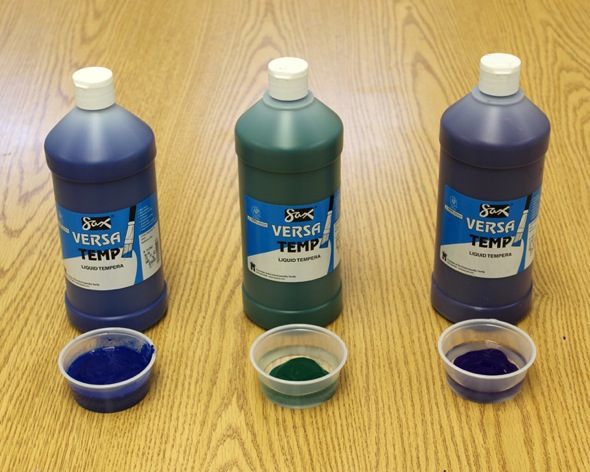The end of the year is all about using up old supplies. Because of this, paste paper is a perfect project to do this time of year. All you need is some leftover paper mache goop and tempera paint. The process is a great way to learn about texture, while the finished product can be used for a variety of projects like journal covers or collages. Simply follow the step-by-step directions below.
How to Make Paste Papers for a Variety of Projects in the Art Room
Step 1: Mix up a batch (or used leftover!) paper mache paste

(Note: For best results, use a commercially made paper mache paste such as Elmer’s Art Paste.)
Step 2: Fill small containers with a ratio of three parts paper mache paste to one part tempera paint. Mix thoroughly.

(Note: If you’d like a darker look, you can mix two parts paste with one part paint.)
Step 3: Using a large brush, paint a simple pattern onto heavy drawing paper.

(Note: I like to break up my colors into warm and cool so that they don’t get muddy.)
Step 4. Using a scraping device (paint scraper, comb, rubber tools, etc…) scrape through the paint. Let Dry.

Voila! Beautiful paper for a variety of activities.

Here’s an example of a first grade “Wild Turkey” collage made with paste paper.

The students absolutely love this process. It’s one of their favorite days in the art room.
Tell us, have you ever made paste paper?
How do you use it in your classroom? Are there other cool painting techniques that use up old paint? We’d love to hear about them!
Magazine articles and podcasts are opinions of professional education contributors and do not necessarily represent the position of the Art of Education University (AOEU) or its academic offerings. Contributors use terms in the way they are most often talked about in the scope of their educational experiences.




